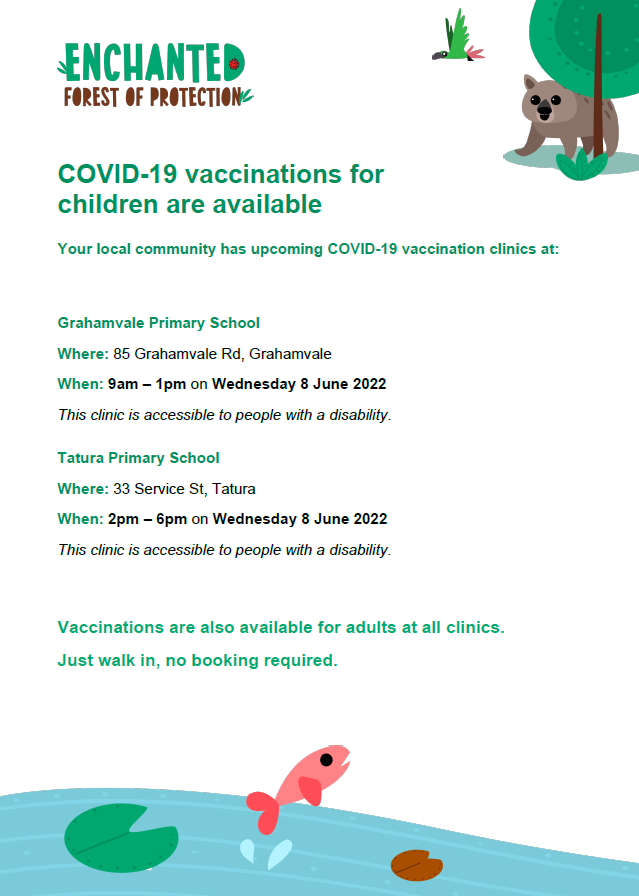Health & Wellbeing

Thread Worms
There are many different types of intestinal worms, but the most common is threadworm (also called pinworm). Threadworm is a type of roundworm that is commonly found in preschool and school-aged children, however the whole family can become infected.
Threadworm causes a very itchy bottom, which is usually worse at night. If your child is infected with threadworm, it is not usually serious and can be treated easily with medication.
Signs and symptoms of threadworm
If your child has threadworm, they may:
- have an itchy bottom, which may become red and inflamed from scratching
- be irritable and generally ‘out of sorts’
- not sleep very well
- have a reduced appetite.
Treatment
You can talk to a pharmacist about over-the-counter treatment options. Drugs such as pyrantel (Combantrin) or mebendazole (Banworm) are very safe and often recommended. Follow the instructions on the packet, bearing in mind special precautions may be given for children under two years of age and for pregnant women.
- Treat all the family members at the same time, even if they aren’t showing any symptoms. Adults can also get threadworm.
- If possible, your child should have a shower on the night they have the medicine, and again the next morning to remove the eggs laid during the night.
Unfortunately, repeat threadworm infection is very common. To help reduce this and to prevent the threadworms from spreading to others, you can take the following precautions:
- Despite the itching, encourage your child not to scratch their bottom. If they must scratch, make sure it is over their underpants and not directly on their skin.
- Keep your child’s fingernails clean and trimmed. Try to stop your child from biting their nails or sucking their thumb.
- Have your child wash their hands and under their nails thoroughly after going to the toilet.
- Wash your child’s bedding, towels and toys in hot water.
- Vacuum your floor often to remove any eggs.
- Clean surfaces in your house that your children may touch, in particular door handles.
- Discourage your child from eating food that has fallen on the floor.
Please visit the following link for further information.
https://www.rch.org.au/kidsinfo/fact_sheets/Worms/
Hand Foot and Mouth
Hand, foot and mouth disease (HFMD) is a viral infection that causes a rash or blisters on the hands and feet, as well as in or around the mouth. There are two types of viruses that cause HFMD, and the symptoms vary depending on the virus.
HFMD mainly affects children under the age of 10, but can also affect adolescents. It spreads easily from one person to another. It is possible to contract the virus more than once, but the symptoms will be less severe.
HFMD is not related to the foot and mouth disease that is found in animals.
Signs and symptoms of HFMD
Symptoms usually start three to seven days after becoming infected, and can last from seven to 10 days. If your child has HFMD, they may feel tired, have a fever, and have a rash. Depending on which virus your child has, the skin rash can look like:
- Small, oval, white blisters on the palms, soles of the feet, as well as in the mouth. Your child may have a sore mouth and throat, leading to poor appetite or risk of dehydration (drinking and eating can be painful because of the mouth blisters).
- A red skin rash with a brown scale on it. The rash appears on the outer arms, hands, legs, feet, around the mouth and upper buttocks. The trunk is usually relatively clear. Sometimes there are blisters present, but they are not usually in the mouth and your child can eat and drink as usual.
The blisters should not be itchy like chickenpox blisters. If your child has eczema, the HFMD can cause the eczema to worsen and potentially become infected with bacteria.
How is HFMD spread?
HFMD is most commonly caused by the coxsackie virus. The main way HFMD spreads is through contact with the fluid from inside the blisters, or with the droplets spread from sneezing and coughing. The virus can also be present in bowel movements (poo) for up to several weeks after the person has recovered.
To prevent the spread of HFMD:
- Wash your hands thoroughly after touching your child’s bodily fluids. This includes touching their blisters, helping them blow their nose, and changing nappies or helping with toileting.
- Make sure your child doesn’t share items such as cutlery, drinking cups, towels, toothbrushes and clothing.
- Keep your child home from school, kindergarten or child care until all the fluid in their blisters has dried.
For further information visit the link below.
https://www.rch.org.au/kidsinfo/fact_sheets/Hand_foot_and_mouth_disease/
Vaccinations
As we approach winter, it’s as important as ever for children to be vaccinated to help them stay healthy, and protect their families and communities.
Onsite COVID-19 vaccination clinics are being held at schools in Grahamvale and Tatura over the next few weeks. All community members of any age are welcome to receive a COVID-19 vaccination at the clinics, and can walk in with no appointment required.
We would appreciate if you could please share the attached information about these vaccination clinics with families through Compass and other networks.
Thank you for your support.
Nick Orchard
Project Director – Student Vaccination Policy
Wellbeing, Health and Engagement Division
Department of Education and Training
Health Reminder
It is important that we all continue to monitor our own and the health of our children daily, during this time. If you or your child develops any symptoms such as a fever, cough, sore throat or shortness of breath:
- Stay at home and do not attend school
- Seek medical advice
- Call the school to let us know of any important outcomes
- If you or your child has a health condition or complex health needs, please discuss this with your medical specialist.
- Information about coronavirus (COVID-19) is available on the DHHS website.
Our school is continuing to promote and implement on a daily basis both Covid-safe behaviours and practices across our school community.
